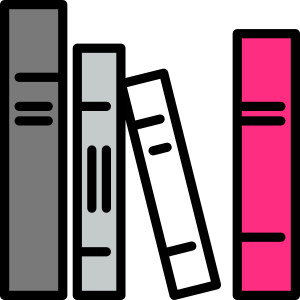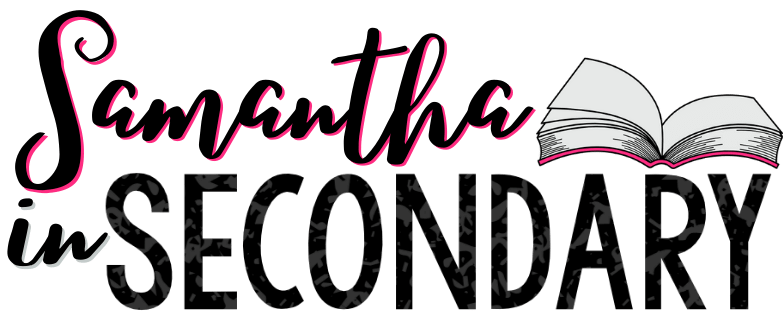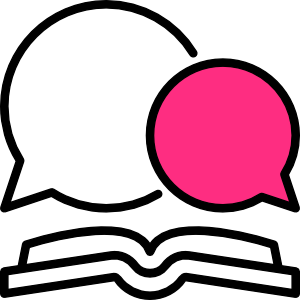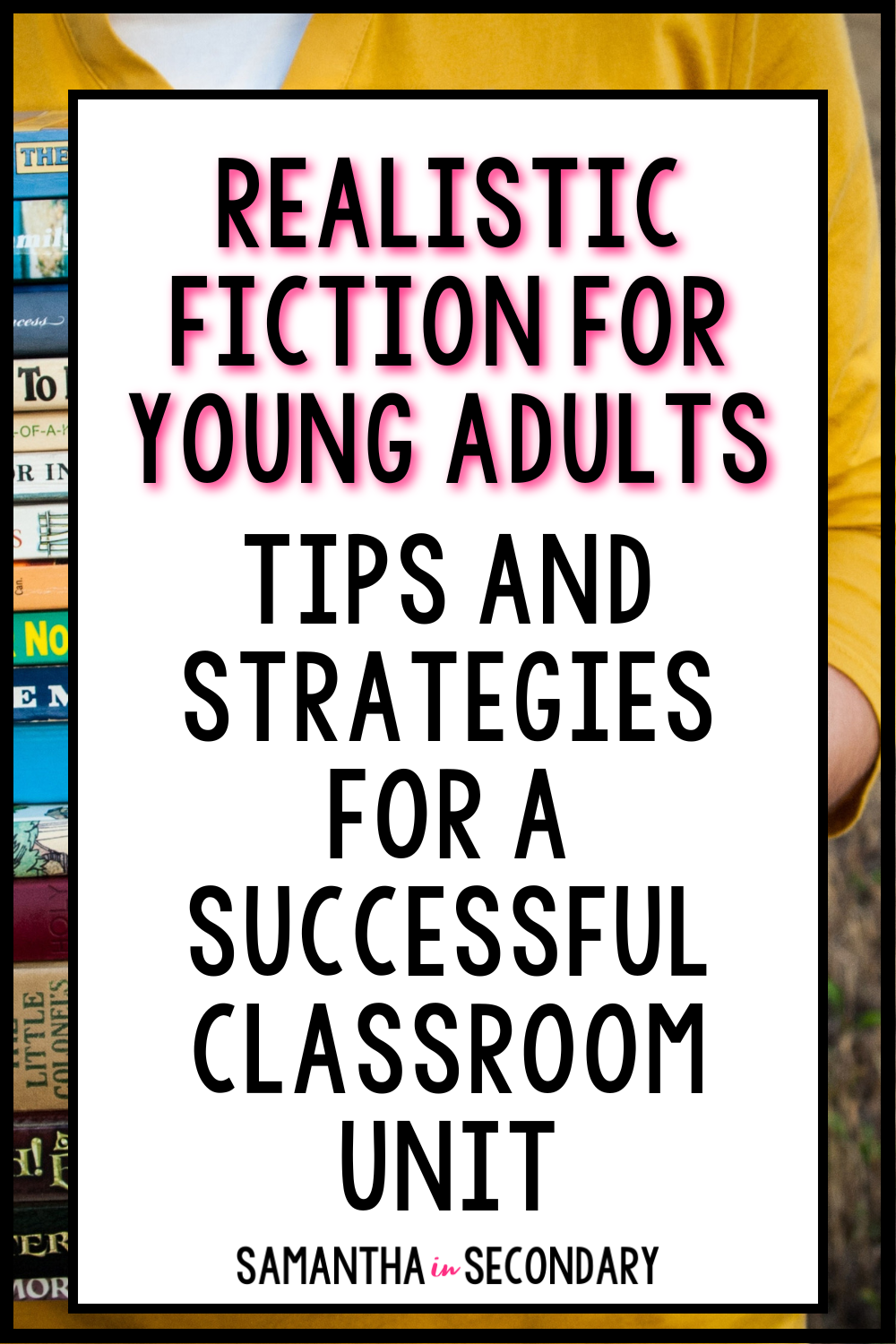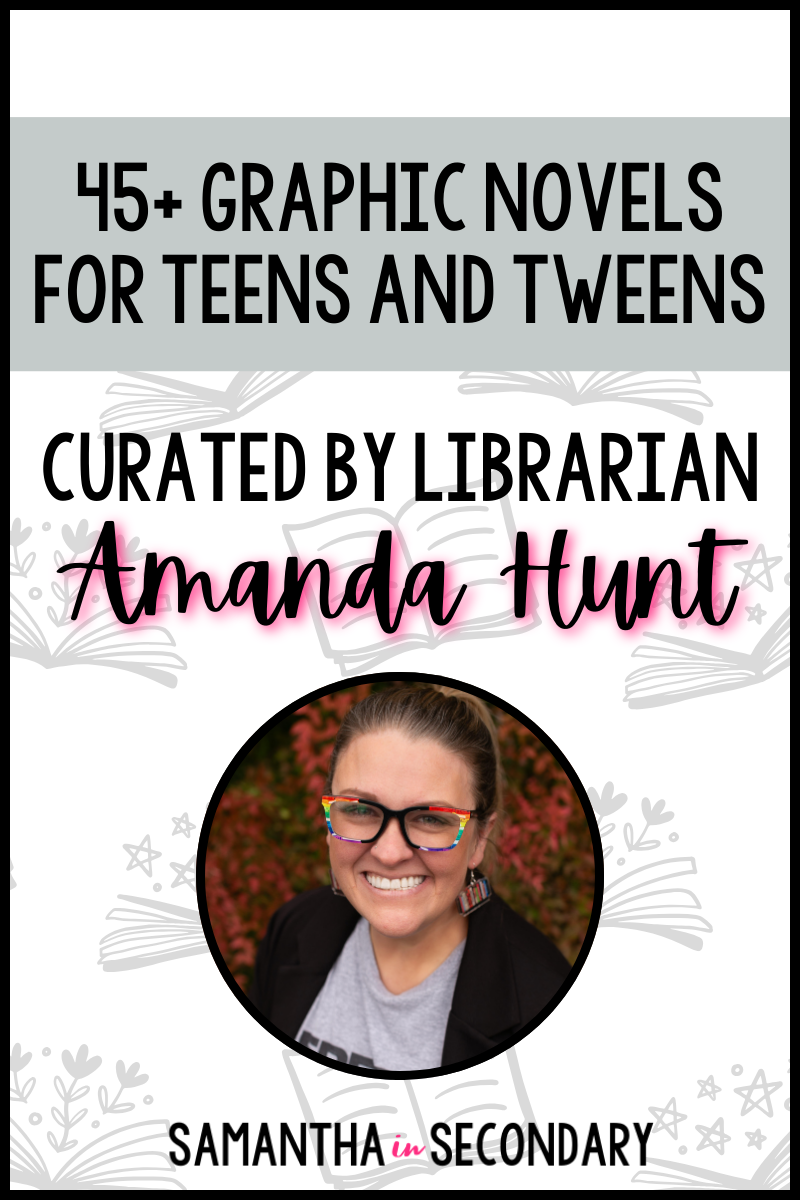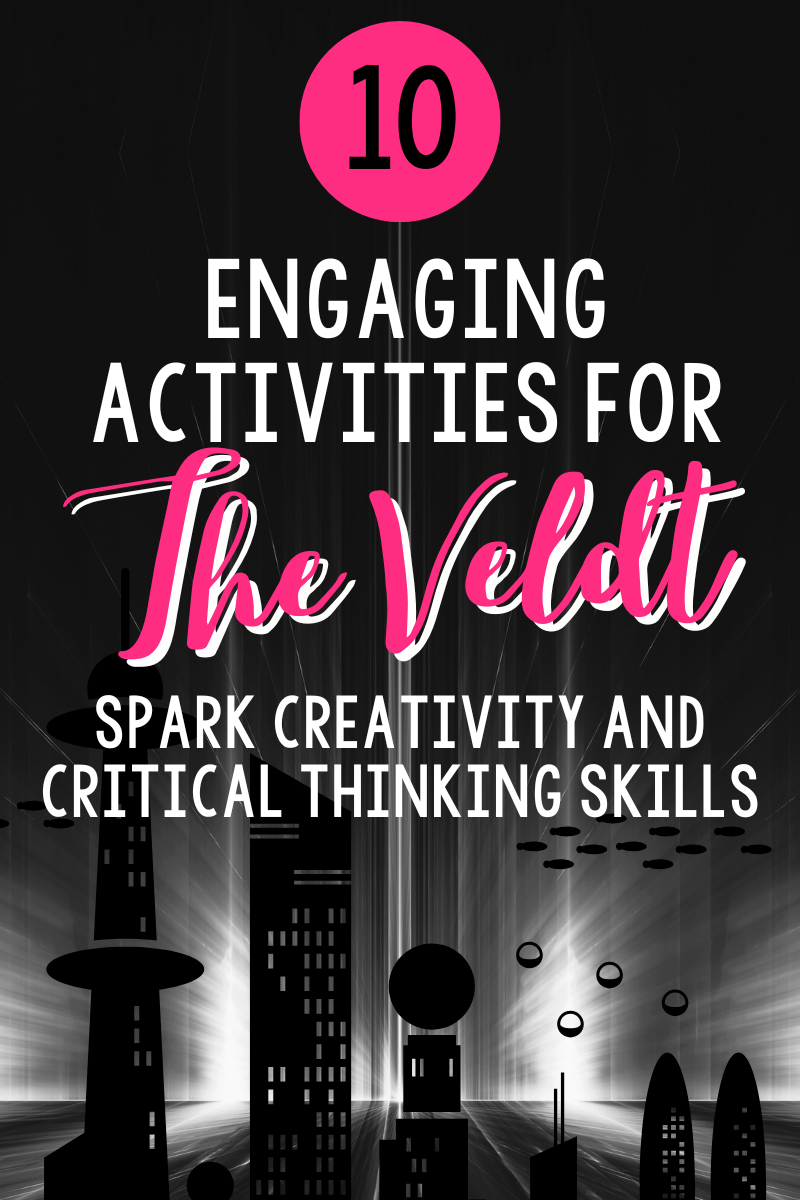Including poetry for reading in your classroom can be a challenge. Maybe it’s part of your lessons in April for National Poetry Month but you’re wondering how to include it elsewhere during the year? How can it be done in connection with other texts? Will students object to its inclusion? Am I comfortable enough with poetry to include it? I’m here with some ideas to resolve these questions and concerns! Read on for five ideas to include poetry for reading any novel.
Note: This is a guest feature written by Lesa from SmithTeaches9to12. Lesa is an ELA teacher and resource creator from Canada. You can find more about Lesa and her love of poetry on her blog or Instagram. Thanks for sharing with us, Lesa!
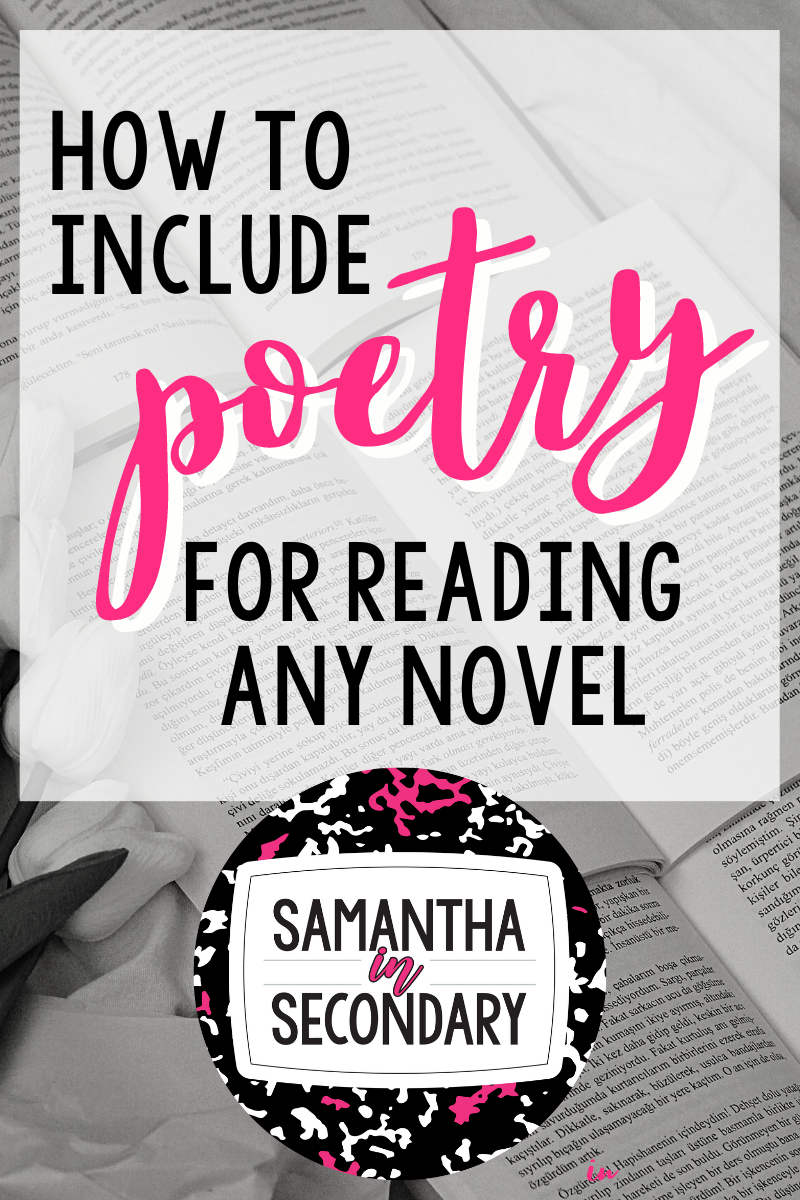
#1: Blackout Poetry
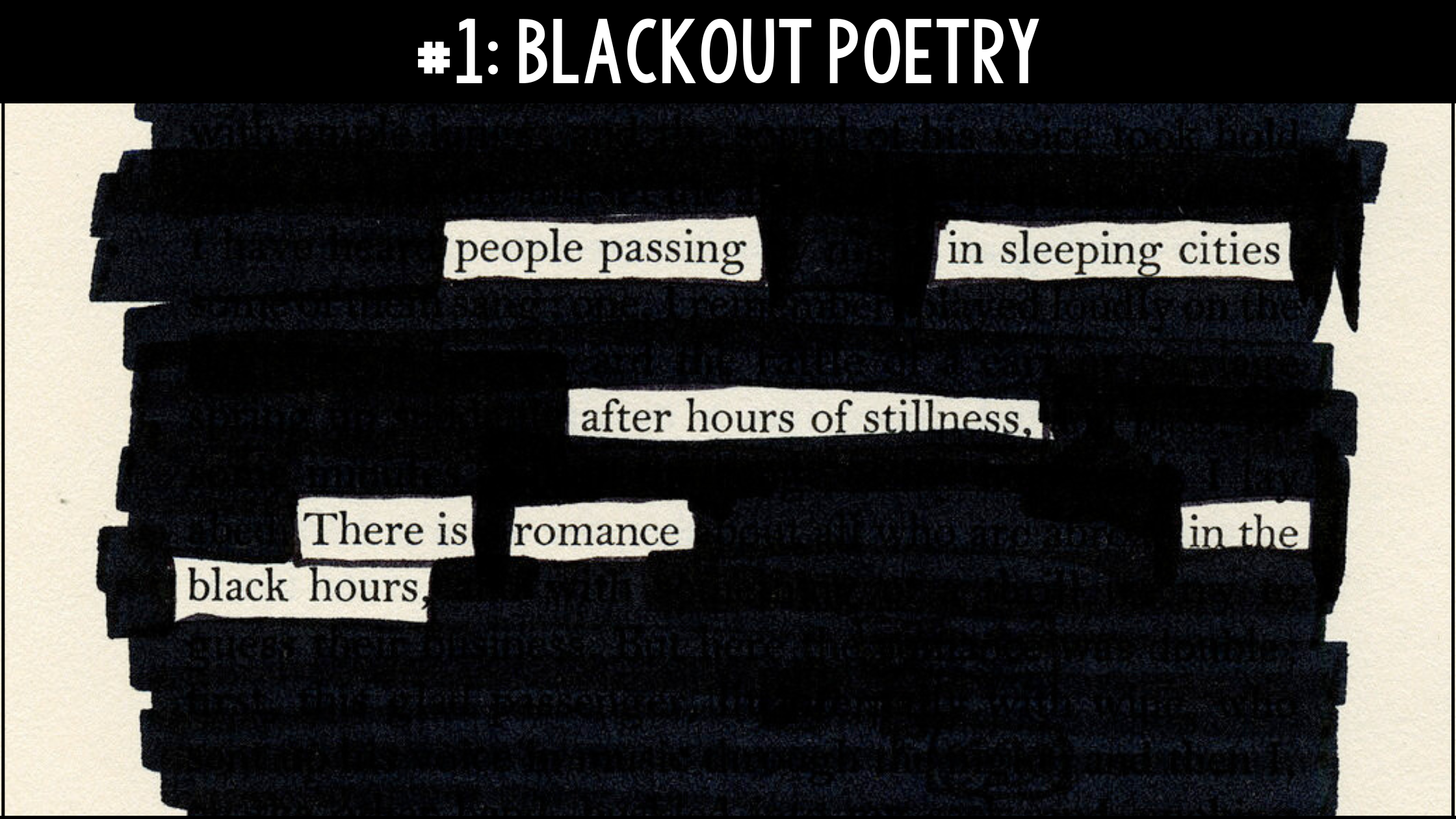
This is likely an activity you’ve done before since it’s simple and yields great results. To add it to your choice reading unit, make some copies of random pages from books in your classroom library. Have students use the page to create a summary of sorts as a review or sales pitch to convince other students to read that particular book.
Another option is to make this part of your First Chapter Friday plans. Copy a page – without spoilers! – from whichever book you’re reading and distribute that page to the class. They can complete a blackout poem to reflect their initial thoughts of the book.
#2: Poetry Reviews
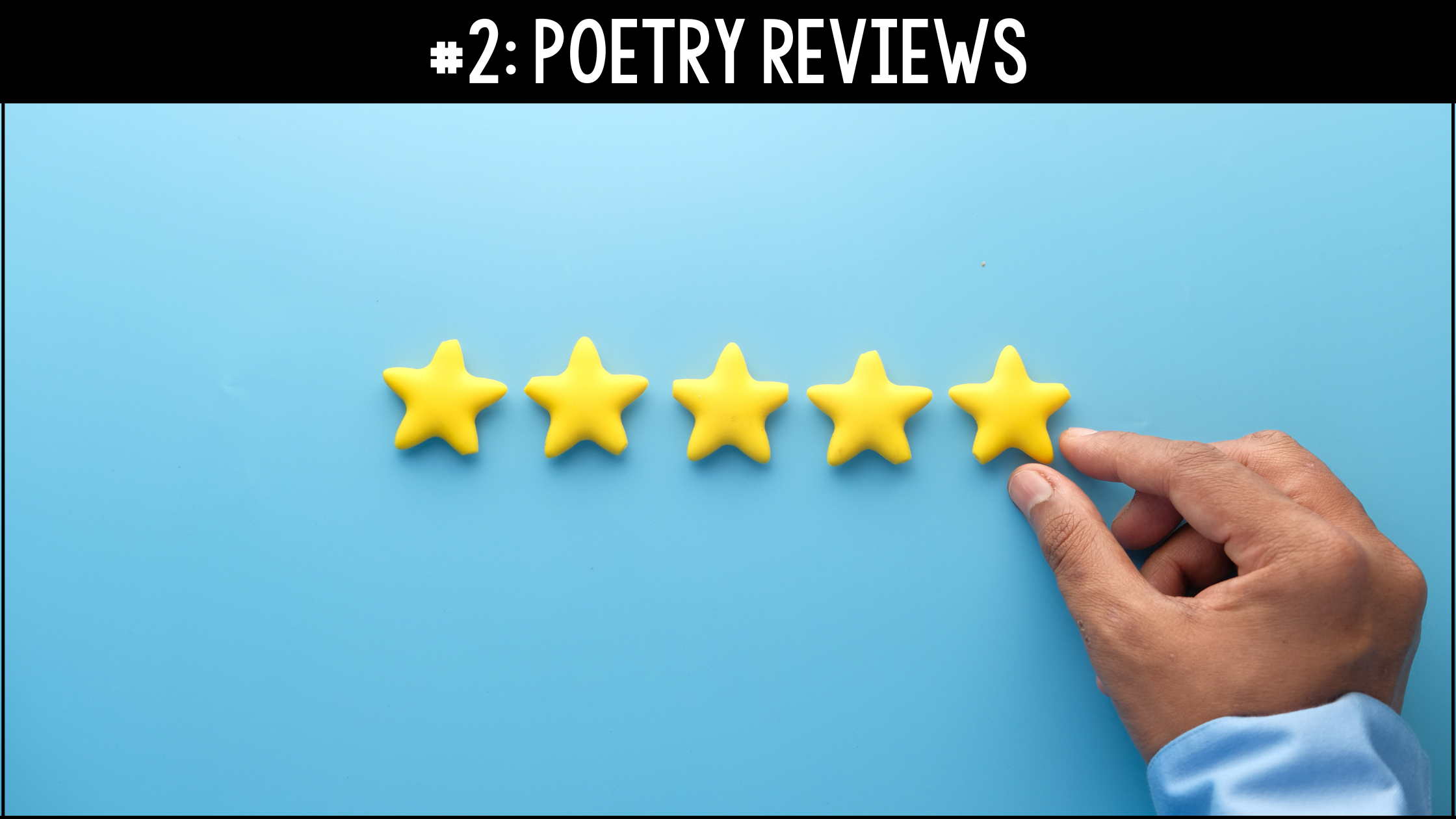
Do you have your students write reviews of the books they read? I like to have a little display where students suggest books to their peers.
For me, I’d prefer a review that’s short and sweet – poetry for (quick) reading – so rather than writing a paragraph, get them to boil it down to a total of 6 lines in the form of a poem. This is like blind date with a book where a few words are chosen to entice people to pick a book without seeing the cover, the title, or reading the book’s blurb.
The six-line poetic reviews my students write vary from concrete poetry to haiku (students usually write 2 to meet the 6-line minimum!) to boil it down poems. There are entry points for all students to write poetry, plus this helps to refine summary skills too! A win-win in my eyes!
#3: Character Perspectives
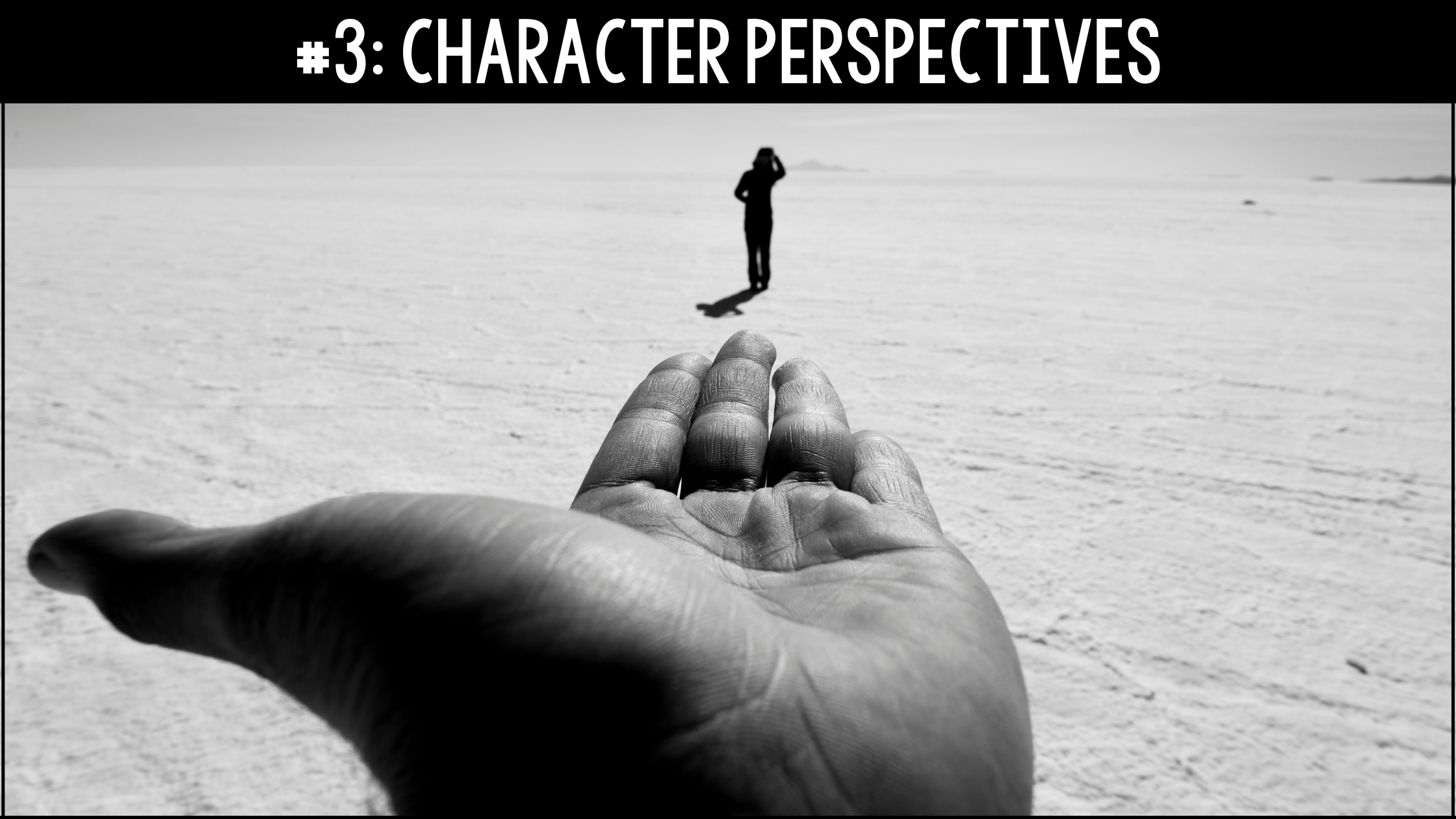
This option also gets students to write poetry and connect with a book’s characters. Here are three options:
- What is the character’s honest poem? This is inspired by “My Honest Poem” by spoken word poet Rudy Francisco. It’s like George Ella Lyons’ Where I’m From poem but more relatable for high school students. Check out this blogpost with a lesson plan and free template to use in your classroom.
- What does the character love or hold in high esteem? Have students write an ode to a person, place, thing, or maybe even an idea based on their knowledge of a particular character. Grab this lesson to guide students through writing odes.
- What’s the character’s ‘theme’ song? Here, you can expand the idea of poetry and make a more accessible entry point for many students by having them choose a specific song to fit their character and explain the connections.
With any or all of these options, have students write a brief justification of their choices. If you include a grade tied to choice reading projects or even if you get students to write poetry at any point in class, check out this post with guidelines for grading students’ poetry creations.
#4: Complementary Poetry Portfolio

This one is a favorite! Students compile a mini-portfolio of poems that connect to the book they’re reading. Focus on three poems, one each for before, during, and after reading their novel.
For before reading, choose a poem based on the title, the cover of the book, or inspired by the book’s blurb. In this way, the poem might not fit precisely with what’s to come but that’s half the fun!
For during reading, students choose a poem that connects with a character or setting or even specific plot points in the book.
Finally, when they finish the novel brainstorm words connected to or inspired by the book. Then use those words to find a poem that relates to the book overall.
This collection of at least three poems is then a ‘sales pitch’ for others to read. Just remind students not to spoil the ending with their final poem choice! When students read the same novel, compile their poetry for reading ‘reviews’ into one spot for students to check out or to have added resources for you when planning future novel or poetry studies!
If you’re wondering where to find poems, I LOVE to use either The Poetry Foundation or even better the Academy of American Poets, which has a search option to find poems based on themes or as a random search using keywords.
#5: Poetry Bookmarks
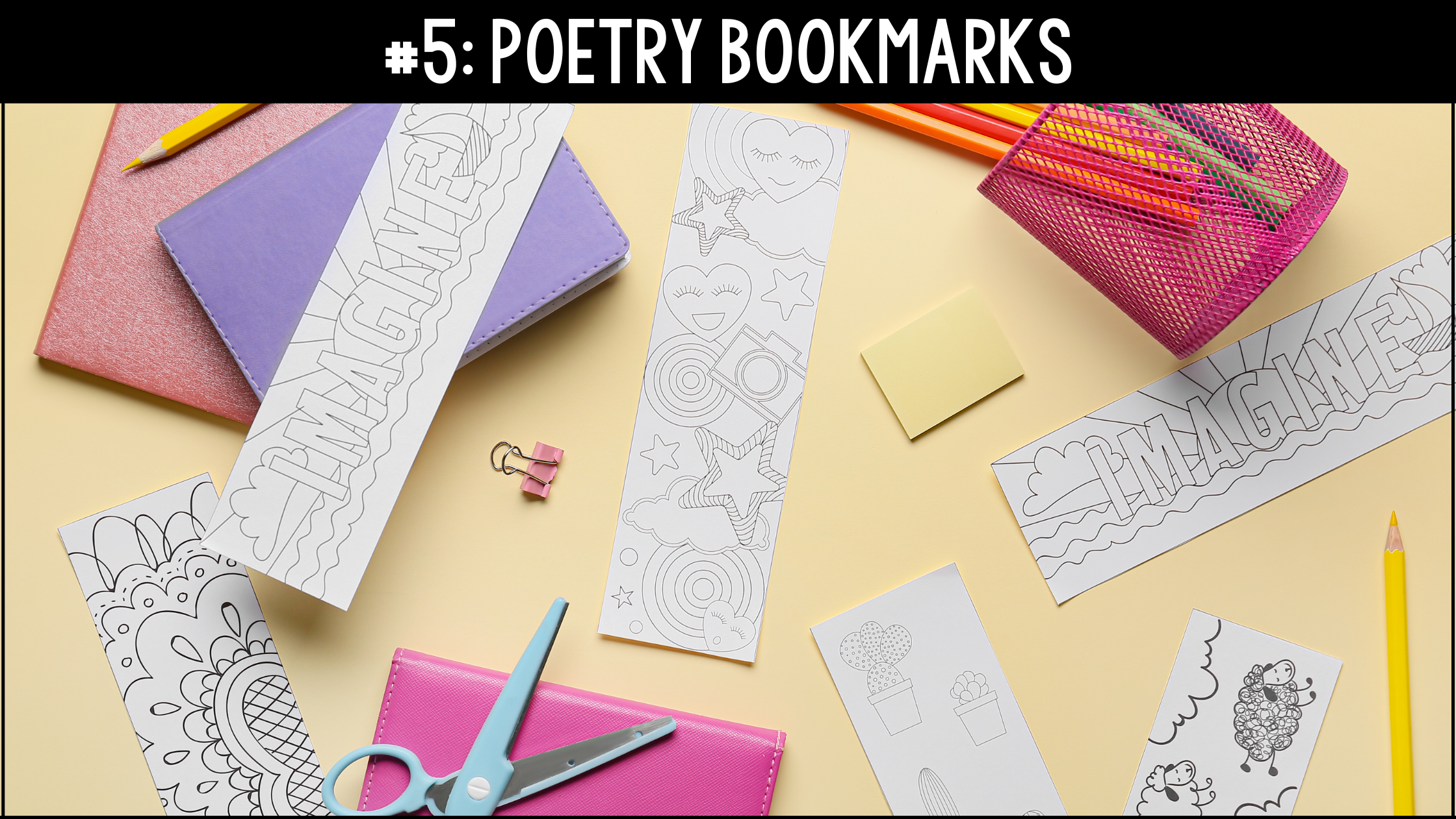
Create a poetry bookmark as part of a class collection, for students’ personal use, or to tie to a novel for the next student to use.
Don’t create extra work for yourself here. Use the poems that students find for the other suggested tasks above. Students can pull a line from one of the poems they found for their poetry portfolios or add their 6-line poetry reviews to the bookmark.
In fact, have students create these bookmarks. Canva for Education is free for teachers, you can add your students to the platform so they can access different design tools. A great way for them to get familiar before tackling a larger design project you might have them do for class (e.g. a poster or pamphlet, etc.). There are a variety of templates for bookmarks that students can use as inspiration or you can print these versions one-sided and have students include a line of poetry or their poetry review on the back of the bookmark.
A Bonus of These Activities
The bonus to most of these activities is that they are material for bulletin boards in your class. I’m a type-B teacher (is there a type-C?) when it comes to decorating my classroom. So with these activities, I can use the students’ creations to make a quick and easy display that showcases student work, adds some poetry year-round, and can be easily updated or left to develop without much from me!
The Ultimate Goal
My ultimate goal is to reduce the intimidation factor around poetry by including more of it in English classes all year long! So whether it’s figuring out how to include poetry in your novel study, pairing poetry with Shakespeare or with podcasts, or even introducing contemporary poetry collections to your classroom library, I’ve got you covered.
And if you have different poetry for reading activities or you’re not quite sure how to add more poetry and want to bounce ideas around, connect with me on Instagram anytime!
